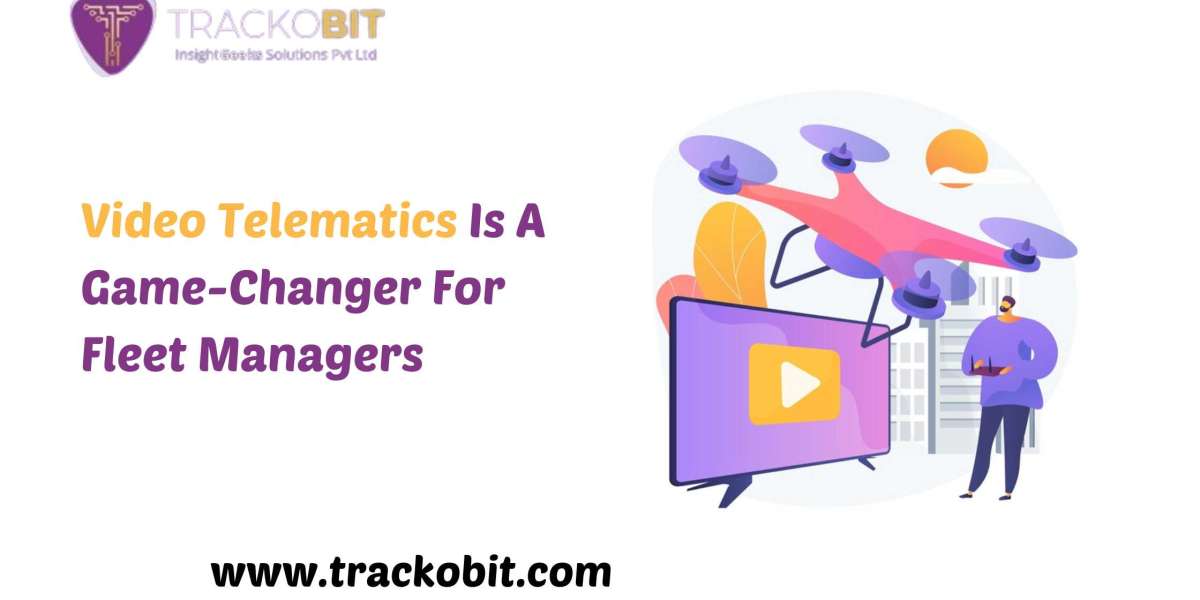In the modern era, no one can overlook the fact that video telematics is transforming fleet management, right? Well, to those unaware, this technology combines video technology with telematics data. And this blend then provides real-time insights. Simply put, thanks to video telematics solutions, fleet managers now understand how to enhance their business safety and efficiency. It is because, with video telematics, they can monitor driver behavior, reduce accidents, and cut costs. Additionally, it also helps in decision-making by offering clear, actionable data.
Wait, as a fleet manager, do you wish to know more about video telematics? If so, this article will help you.
What Does Video Telematics Mean?
In layman's terms, video telematics is a combination of video technology and telematics.
Traditionally, telematics was all about tracking and transmitting data. It is used to cover vehicle location, speed, and other metrics. But after adding video to telematics, businesses have got something bigger.
For instance, cameras in vehicles record footage. This footage provides visual proof of incidents. Moreover, it helps in understanding what happens on the road.
Briefly put, video telematics solutions offer more than just data. It provides context and clarity. That is why it is now seen as a powerful tool for fleet management.
How Does Video Telematics Work?
Let's break it down for you in simple words.
Video telematics uses cameras installed in vehicles and these cameras capture video footage. The system also collects telematics data. This includes speed, location, and driving behavior. Once done, the video and data are synced and transmitted to a central system. And fleet managers can access this information in real time. They can review footage and data together. This helps in understanding incidents. Furthermore, it aids in improving driver behavior. The system often includes alerts. These alerts notify managers of risky driving. This suggests they can take immediate action. Hence, video telematics provides a complete picture as it helps in making informed decisions.
Types Of Cameras Used In Video Telematics
Well, there are several types of cameras used in video telematics.
- Forward-facing cameras: These capture the road ahead. They record traffic conditions and incidents.
- Driver-facing cameras: These monitor the driver. They capture driver behavior and actions.
- Side-view cameras: These cover the sides of the vehicle. They are useful for blind spots and lane changes.
- Rear-view cameras: These monitor the area behind the vehicle. They help in reversing and parking.
- Interior cameras: These are used in passenger vehicles. They monitor the interior space.
Basically, each type of camera serves a specific purpose. And together, they provide comprehensive coverage.
Benefits Of Video Telematics For Fleet Businesses
Video telematics offers many benefits for fleet businesses:
- Enhanced Safety
Cameras in video telematics systems continuously monitor driver behavior. They can identify risky actions such as harsh braking, speeding, and distracted driving. This allows fleet managers to provide targeted training and coaching to drivers. By addressing these risky behaviors promptly, the likelihood of accidents significantly decreases. Enhanced safety measures not only protect the drivers but also other road users. Over time, this leads to a safer and more responsible driving culture within the fleet.
- Accurate Incident Reporting
Video footage from telematics systems offers clear, indisputable evidence of events on the road. In case of accidents or disputes, this footage helps in understanding what actually happened. It provides a reliable account of incidents, protecting drivers from false claims and fraudulent accusations. Accurate incident reporting ensures fair handling of insurance claims and legal matters. This transparency can lead to quicker resolutions and reduced litigation costs, fostering trust between the company, drivers, and clients.
- Improved Driver Behavior
Real-time feedback from video telematics systems encourages drivers to adhere to safe driving practices. When drivers are aware that their behavior is being monitored, they are more likely to follow safety protocols and avoid risky maneuvers. Fleet managers can use the collected data to identify patterns and correct bad habits through regular feedback and training sessions. This continuous improvement in driver behavior not only enhances safety but also boosts overall performance and efficiency.
- Cost Savings
Video telematics contributes to significant cost savings in various ways. By reducing the number of accidents, fleets save on repair costs, insurance premiums, and potential legal fees. Improved driving behavior and optimized routes lead to better fuel efficiency, reducing fuel costs. Additionally, proactive maintenance alerts based on telematics data help avoid costly breakdowns and extend vehicle lifespan. Overall, the operational costs decrease, leading to better financial health for the fleet business.
- Regulatory Compliance
Lastly, fleet businesses must adhere to various legal and regulatory requirements related to safety and operational standards. Video telematics solutions help ensure compliance by providing documented evidence of compliance measures. This includes proof of driver hours, vehicle maintenance, and adherence to safety protocols. Having this documentation readily available simplifies audits and inspections, reducing the risk of penalties and enhancing the company's reputation for compliance and safety.
Read blog : Benefits of Video Telematics
How To Choose The Best Video Telematics Solution?
Choosing the right video telematics solution is crucial. Here are some tips:
- Understand your needs: Identify what you need from the system. Consider safety, efficiency, and compliance.
- Check features: Look for features like real-time alerts, data integration, and easy access.
- Evaluate camera quality: Ensure high-resolution cameras. They provide clear footage.
- Consider scalability: The system should grow with your business.
- Check compatibility: Ensure it works with your existing systems.
- Look at support: Choose a provider with good customer support.
- Read reviews: Check user reviews and testimonials. They provide real-world insights.
- Evaluate cost: Consider the total cost of ownership. Factor in initial and ongoing costs.
After considering each point, our TrackoBit video telematics solution turns out to be the best choice for fleet businesses.
Read More : What is Telematics Software? And How Can it Help Your Fleet?
Final Thoughts
All in all, video telematics is revolutionizing fleet management as fleet managers can now monitor driver behavior and optimize operations. Yet, choosing the right solution is crucial. Thus, consider your needs, features, and support. Also, with the right system, fleet management becomes easier and more effective.
Try our video telematics solution TrackoBit for a competitive edge. After all, it is the future of fleet management. Check now.
Source : Video Telematics Is A Game-Changer For Fleet Managers








